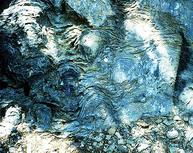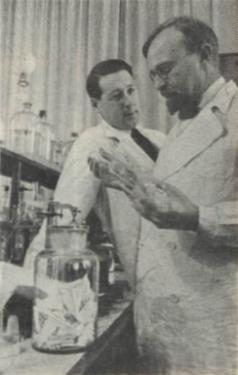 | ||||
What Is Abiogenesis?
Spontaneous generation was not a theory that addressed the origin of life, but instead, had been based on the belief that living things commonly emerge from nonliving matter. Although science ultimately established that living things arise from other living things, the question remained…”Where did the first living thing come from?” Abiogenesis is the theory that addresses the actual origins of life on Earth.
Spontaneous Generation vs. Abiogenesis - P2
Precambrian stromatolites in the Siyeh Formation, Glacier National Park. These 3.5 billion year old geological formations contain fossilized cyanobacteria microbes, one of the earliest known life forms on Earth.
SPO VIRTUAL CLASSROOMS
Page last updated: 9/2014
The SPO website is best viewed in Google Chrome,
Microsoft Explorer or Apple Safari.
The Virtual Cell Biology Classroom provides a wide range of free educational resources including Power Point Lectures, Study Guides, Review Questions and Practice Test Questions.
Page last updated: 8/2015
PAGE 2 < Back to Page 1
End of Article
Abiogenesis and Nucleic Acids
All living things have genetic instructions made of organic molecules called nucleic acids. These instructions are essentially the blueprint for each living thing. Therefore the question of how life on Earth originated, the investigation of abiogenesis, focuses on how the first nucleic acids came into being.
Oparin's Origin of Life
Fossil evidence and molecular biomarkers, such as carbon isotopes, show that microbes existed on earth 3.5 billion years ago. These cellular microbes were complete living cells, so the origin of genetic chemicals had to precede these live forms.
But there was no solid theory on abiogenesis until 1924, when Aleksandr Ivanovich Oparin, a Russian biochemist, presented his ideas in his publication The Origin of Life. Oparin proposed a theory that life on Earth developed through gradual chemical evolution of carbon-based molecules within a primordial soup. Since Oparin’s significant contribution, scientists continue to investigate the specific sequence of chemical events that led to organization of the first nucleic acids.
Sources
- Bauman, R. (2005) Microbiology. Pearson Benjamin Cummings.
- Oparin, A. I. (1924) The Origin of Life. Moscow: Moscow Worker publisher (in Russian)
- Park Talaro, K. (2008) Foundations in Microbiology. McGraw-Hill Companies
- Pasterur's Spontaneous Generation Experiment animation and quiz, W. H. Freeman
- Animated Tutorial on Scientific Method using spontaneous generation experiment.
- History of Microbiology Lecture Main Page from the Virtual Microbiology Classroom.
Alexander Oparin (right) at the laboratory, 1938.
 | ||||||
SPO is a FREE science education website. Donations are key in helping us provide this resource with fewer ads.
Please help!
(This donation link uses PayPal on a secure connection.)



